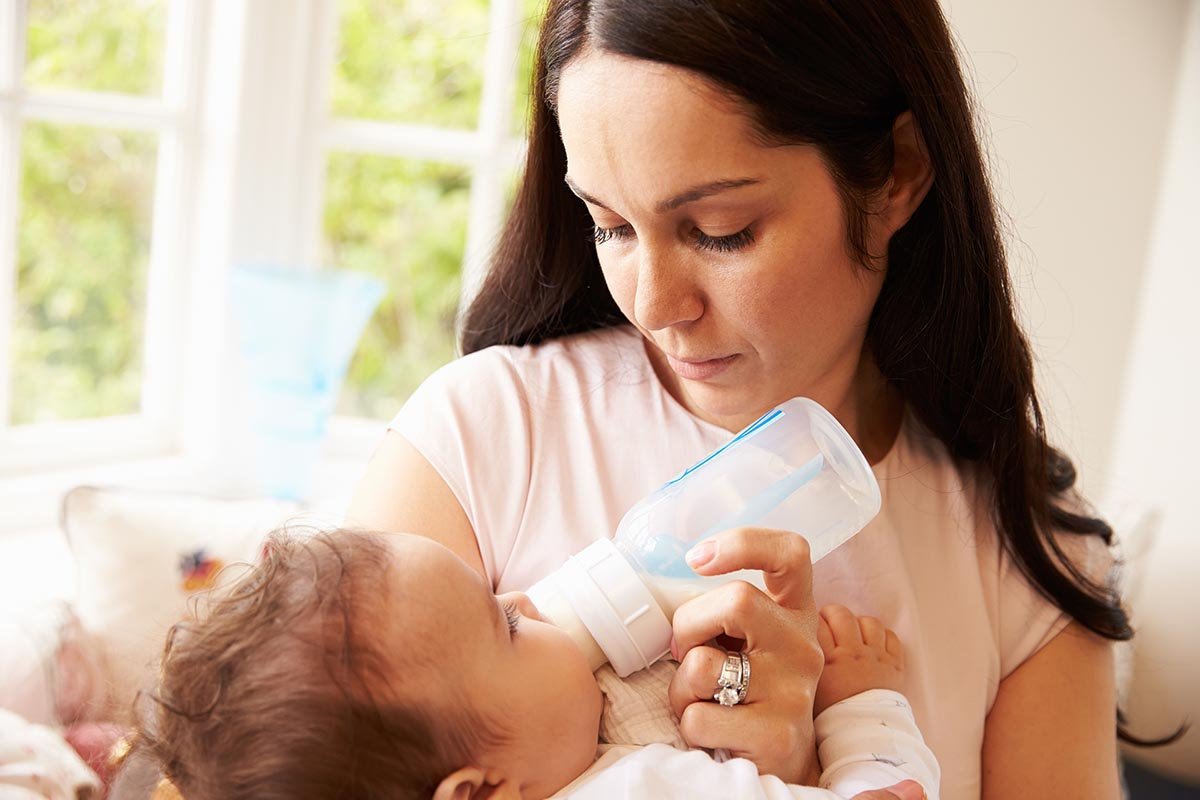When emergencies strike, ensuring that infants receive proper nutrition becomes even more challenging.
As a parent, it’s crucial to be prepared with the right information and supplies to safely feed your baby during these difficult times.
In this guide, I will share valuable insights on emergency food options for infants, including breastfeeding and formula feeding, essential supplies, and tips for creating an emergency food supply. Let’s dive in!
Key Takeaways:
- During emergencies, breastfeeding is the best option for infants as it provides protection against diseases and ensures proper nourishment.
- If breastfeeding is not possible, ready-to-use infant formula is recommended. Alternatively, powdered formula can be prepared with boiled or treated water.
- Essential supplies for emergency feeding include clean bottles, nipples, pacifiers, and feeding utensils. Disposable cups can be used if safe water is inaccessible for cleaning.
- Stocking up on non-perishable foods is crucial for infant feeding during emergencies. Canned meats, fruits, and high-energy snacks are good options.
- Having an adequate water supply is essential. Aim for a three-day supply and consider alternative beverages like sports drinks or canned coconut water.
Table of Contents
Our Personal Advice

Navigating the chaos of city life and emergency prep as a parent?
Let’s break it down with some humor and real talk that is mainly here to encourage you.
Breastfeeding during the end times—aka emergencies—is like being a superhero whose power is an ever-ready food supply.
No electricity? No problem.
You’re a renewable resource, mama. Just remember to stay hydrated; think of yourself as a very exclusive, all-natural juice bar.
Formula feeding in a crisis feels like a mixology class you never signed up for.
Ready-to-use formula is your best friend here, bypassing the need for clean water.
As for supplies, think of it as your baby’s survival kit: bottles, nipples, and pacifiers at the ready, because who knows when you’ll next venture into the wilds of civilization.
Stocking up on essentials?
Aim for non-perishables that wouldn’t look out of place in a bunker. High-energy snacks for you, because chasing a toddler without power deserves its own medal. And water—lots of it. If you’ve dealt with diaper explosions, managing a water supply is a walk in the park.
Fresh produce and nutritious snacks might sound like a luxury, but with some clever choices, you can keep the family’s diet from resembling a doomsday prepper’s dream.
Think canned beans with a side of humor.
Hydration is key. Between water, sports drinks, and coconut water, you’re setting up a mini-bar for the soberest party of your life.
In a nutshell, keeping your tiny humans fed and hydrated during emergencies is all about planning, a sense of humor, and the occasional caffeine boost for yourself.
Remember, in the world of parenting, flexibility and a good laugh go a long way.
Stay prepared, stay laughing.
Okay now on to the in depth guide.
Breastfeeding during Emergencies

Hack: Keep a scarf or shawl in your emergency kit. It doubles as a privacy cover and a cozy blanket for your baby. Remember, in a pinch, laughter is the best way to relieve stress and keep milk flowing, even when the lights are out.
In natural disasters and emergencies, breastfeeding is a crucial way to provide infants with essential nutrition and protect them from waterborne diseases.
Breast milk is readily available and does not require any preparation or external supplies, making it a reliable option when other resources may be limited.
During such situations, it is important for breastfeeding mothers to prioritize their own health and well-being.
By maintaining proper hygiene practices such as washing hands before feeding, mothers can minimize the risk of infections and ensure the safety of their infants.
Additionally, having a plan in place for expressing breast milk by hand can be useful during power outages or when access to traditional breast pumps is not possible.
Staying with the child and continuing to breastfeed during and after a disaster is highly recommended.
Breast milk provides necessary nutrients, antibodies, and hydration for infants, which is particularly crucial in challenging circumstances.
It is an effective way to ensure a stable food supply and the well-being of the child, even when resources are scarce.
Preparing for Breastfeeding during Emergencies
While breastfeeding during emergencies is a natural and instinctive process, it is essential to be adequately prepared. Here are some tips to consider:
- Learn how to express breast milk by hand in case of power outages or limited access to breast pumps.
- Stock up on extra nursing pads, as they may be difficult to find during emergencies.
- Have a manual or battery-operated breast pump as a backup option. Make sure to have extra batteries or a generator if necessary.
- Keep a supply of clean water for personal hygiene and hydration.
- Consider reaching out to local support groups and organizations that provide assistance to breastfeeding mothers during emergencies.
| Breastfeeding during Emergencies | Formula Feeding during Emergencies | |
|---|---|---|
| Accessibility | Readily available | Requires prepared formula and clean water |
| Hygiene | Mothers should maintain proper handwashing practices before feeding | Parents should wash hands before preparing formula |
| Preparation | No preparation required | Formula needs to be prepared with clean water |
| Benefits | Provides essential nutrients, antibodies, and hydration for infants | Alternative option when breastfeeding is not possible |
Formula Feeding during Emergencies
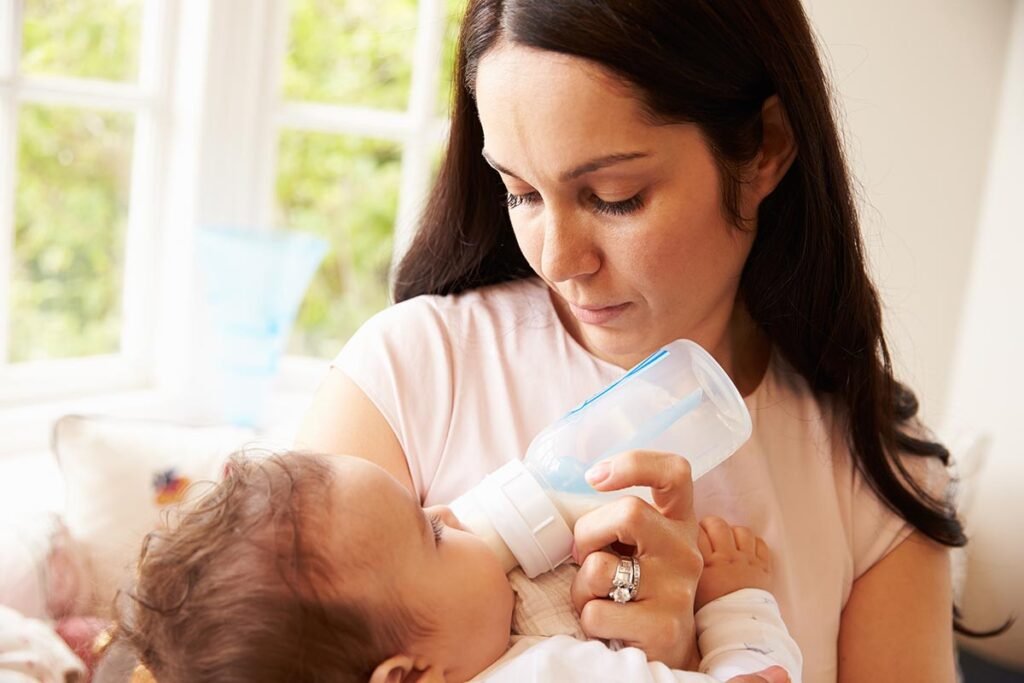
Hack: Pre-measure formula portions into separate, sealed bags. It’s like having instant baby meals ready to go—just add water. Think of it as fast food for the end of the world.
In situations where breastfeeding is not possible during emergencies, formula feeding becomes an essential option for providing infants with nutrition and hydration.
It is crucial for parents to understand the safe preparation methods for formula and have the necessary supplies on hand.
Safe Formula Preparation
When preparing infant formula during emergencies, it is important to prioritize hygiene and follow safe practices:
- Wash hands thoroughly before handling formula ingredients and feeding equipment.
- If ready-to-use infant formula is available, it is the safest option and does not require any additional preparation.
- If powdered formula needs to be prepared, use boiled or treated water that has cooled down. Follow the instructions on the formula packaging for the correct water-to-powder ratio.
- If boiling water is not possible, bottled water can be used as an alternative for preparing powdered or concentrated formula.
- Extra precautions should be taken when preparing powdered formula for infants under 2 months, premature babies, or those with weakened immune systems. Consult with a healthcare professional or pediatrician for specific recommendations.
By following these guidelines, parents can ensure the safe preparation of formula and provide infants with the nutrition they need during emergencies.
| Safe Formula Preparation Tips | Do | Don’t |
|---|---|---|
| Wash hands before handling formula | ✓ | ✗ |
| Use tap water for powdered formula | ✗ | |
| Use boiled or treated water for powdered formula | ✓ | |
| Use ready-to-use infant formula if available | ✓ | ✗ |
| Consult with a healthcare professional for specific recommendations | ✓ | ✗ |
Essential Supplies for Emergency Feeding
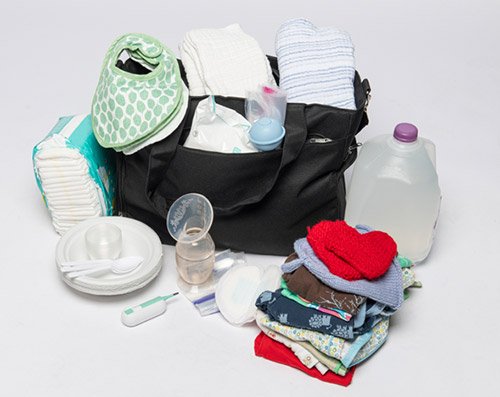
Hack: Use a marker to label bottle lids with measurement marks. If you lose the measuring cup in the dark or chaos, you’ll still nail the perfect feed. It’s like MacGyver, but for baby feeding.
When it comes to emergency situations, having the right supplies for feeding infants is crucial. Here are some essential items you should have on hand:
Feeding Supplies
- Clean Bottles: Make sure you have enough bottles to ensure your baby’s feeding needs are met. It’s important to keep them clean and sanitized.
- Nipples: Have a supply of extra nipples available to replace worn-out or damaged ones.
- Pacifiers: If your baby uses pacifiers, make sure to have a few extras in case they get lost or contaminated during an emergency.
- Feeding Utensils: Depending on your baby’s age, you may need spoons or small bowls for feeding solid foods.
Alternative Options
In situations where access to clean water is limited, you may need to explore alternative feeding methods for your baby. Here are a few options:
- Sippy Cups: If you’re unable to clean bottles properly, consider using disposable cups that your child can sip milk from.
- Ready-to-Feed Formula: Having a supply of ready-to-feed formula can be helpful in emergencies, as it eliminates the need for water preparation.
Dealing with Contaminated Supplies
In the unfortunate event that your feeding supplies come into contact with floodwater or other contaminants, it’s essential to take the necessary precautions:
- Discard Nipples and Pacifiers: Any items that have been in contact with floodwater should be discarded to avoid the risk of contamination.
- Sanitize Bottles: If your bottles have been exposed to floodwater, wash them thoroughly with soap and clean water or sanitize them with a bleach solution.
By having the right supplies and being prepared, you can ensure that your baby’s feeding needs are met in emergency situations.
Preparing an Emergency Food Supply

Hack: Create a “baby section” in your emergency pantry. Include a mix of jarred baby food, pouches, and formula. Organize it by expiration date, so you always grab the oldest item first. It’s meal prep for the apocalypse.
In times of crisis, it is crucial to have an emergency food supply that can sustain you and your family.
Stocking up on long-lasting food options is essential to ensure you have enough provisions to last through an emergency situation.
By planning ahead and considering the nutritional needs of your household, you can create a well-rounded supply that will provide nourishment during uncertain times.
Choosing the Right Foods
When selecting emergency foods, opt for non-perishable items that require little to no refrigeration or cooking.
Canned meats, fruits, and vegetables are excellent choices as they have a long shelf life and can be consumed directly from the can. High-energy foods like peanut butter, crackers, and granola bars are also recommended as they provide a quick and convenient source of nutrition.
It’s important to ensure that your emergency food supply includes foods suitable for infants, elderly individuals, and those with special dietary needs.
Storage and Rotation
Proper storage and rotation of your emergency food supply are essential to maintain its freshness and quality.
Store your food in a cool, dry place away from direct sunlight and extreme temperatures.
Be sure to check expiration dates regularly and rotate your stock, consuming and replacing items before they expire.
Vacuum-sealed containers can help prolong the shelf life of your food, keeping it fresh and ready to eat when needed.
| Category | Examples |
|---|---|
| Proteins | Canned meats (tuna, chicken), jerky, beans |
| Fruits and Vegetables | Canned fruits, vegetables, and soups |
| Grains and Carbohydrates | Crackers, rice, pasta, oats |
| Dairy and Dairy Alternatives | Powdered milk, non-refrigerated almond milk |
| Snacks and Energy Boosters | Nuts, granola bars, trail mix |
| Beverages | Bottled water, sports drinks, canned coconut water |
By following these guidelines and creating a well-thought-out emergency food supply, you can rest assured knowing that you and your family will have the necessary sustenance during challenging times.
Remember to periodically check and replenish your supply to ensure its efficacy and freshness.
Stay prepared and stay safe!
Creating a Short-Term Emergency Supply
Hack: Pack a separate, grab-and-go bag with a three-day supply of baby essentials. Include ready-to-eat snacks for you that can be opened and consumed one-handed, because you might literally have your hands full.
In times of emergency, it’s crucial to have a short-term emergency supply that can sustain you and your family for at least three days.
This ensures that you have enough non-perishable foods to keep everyone fed and nourished until help arrives or normalcy is restored.
When preparing your three-day emergency kit, focus on selecting non-perishable foods that have a long shelf life and require little to no preparation.
Canned goods, such as soups, vegetables, and fruits, are excellent options as they can be easily opened and consumed. Include foods that are high in protein and healthy fats to provide sustained energy, such as canned tuna or peanut butter.
It’s also important to consider any special dietary needs within your family when choosing items for your emergency supply.
If anyone has food allergies or dietary restrictions, be sure to include appropriate alternatives.
Additionally, don’t forget to include a manual can opener and disposable plates, cups, and utensils for convenience.
Long-Term Emergency Food Supply

Hack: Invest in a vacuum sealer. Seal dried fruits, veggies, and meats for a DIY baby-friendly trail mix. It’s like creating a time capsule, but instead of memories, it’s full of snacks.
In areas where power outages can last for an extended period, it is crucial to have a two-week emergency food supply.
This ensures that you and your family have enough sustenance to withstand the challenges of an extended crisis.
A well-prepared long-term emergency kit can provide peace of mind and help you stay nourished during uncertain times.
When planning your long-term emergency food supply, it’s important to consider increasing quantities of staple foods and non-perishable items.
These foods should be shelf-stable and have a long shelf life, so they can be safely stored for an extended period. Canned goods, such as vegetables, fruits, and meats, are excellent options as they can last for years if stored properly.
A balanced and nutritious diet is essential during emergencies, even in the absence of fresh produce.
Canned vegetables and fruits can provide essential vitamins and minerals.
It’s also advisable to include high-energy foods like nuts, seeds, and protein bars to maintain energy levels. Don’t forget to stock up on grains, such as rice and pasta, which are versatile and can serve as the foundation for many meals.
By taking these measures, you can ensure that your long-term emergency food supply remains viable and provides the sustenance you need during extended power outages and other crisis situations.
Long-Term Emergency Food Supply Checklist
| Food Category | Recommended Quantity per Person |
|---|---|
| Canned vegetables | 20-30 cans |
| Canned fruits | 20-30 cans |
| Canned meats (tuna, chicken, etc.) | 10-20 cans |
| Grains (rice, pasta, etc.) | 10-20 pounds |
| Beans and legumes | 10-20 pounds |
| High-energy foods (nuts, seeds, protein bars) | 5-10 pounds |
| Water | 1 gallon per person per day |
Having a well-stocked long-term emergency food supply is essential for your family’s well-being and survival during extended power outages.
Fresh Food Options for Emergencies

Hack: Sprout beans or lentils in jars. They add fresh, nutritious crunch to meals and are surprisingly easy to grow, even in an urban bunker. It’s like having a mini garden in your pantry.
During emergencies, it’s important to have fresh food options that can provide essential nutrients to sustain you and your family.
While it may be challenging to access perishable foods, there are alternatives and strategies to help maintain freshness in these situations.
Perishable Food Alternatives
If fresh produce is unavailable or limited, there are certain fruits and vegetables that have longer shelf lives and can be included in your emergency food supply.
Apples, citrus fruits, unripe avocados, unripe tomatoes, and root vegetables like potatoes and carrots can stay fresh for an extended period.
Farmers’ markets can be a valuable resource during emergencies.
They often provide fresher produce that has a longer shelf life compared to store-bought options.
Consider visiting a local farmers’ market to stock up on fresh fruits and vegetables for your emergency food supply.
Maintaining Freshness in Emergencies
When it comes to storing fresh produce during emergencies, there are a few tips to help maintain freshness for as long as possible.
For bagged salad, placing a paper towel inside the bag can absorb moisture and prevent wilting. This simple trick can help extend the shelf life of your salad greens.
It’s important to regularly check the freshness of your perishable foods and plan meals accordingly.
Using fresh ingredients earlier in the emergency situation and saving canned or non-perishable options for later can help minimize waste and ensure you have nutritious meals throughout the duration of the emergency.
| Perishable Food Alternatives | Maintaining Freshness in Emergencies |
|---|---|
| Apples | Regularly check freshness |
| Citrus fruits | Use fresh ingredients earlier |
| Unripe avocados | Save canned/non-perishable options for later |
| Unripe tomatoes | Plan meals accordingly |
| Root vegetables (potatoes, carrots) | Store bagged salad with a paper towel |
By incorporating these fresh food options and following strategies to maintain freshness, you can ensure that you and your family have nutritious meals even in emergency situations.
Nutritious Snack Options for Emergencies
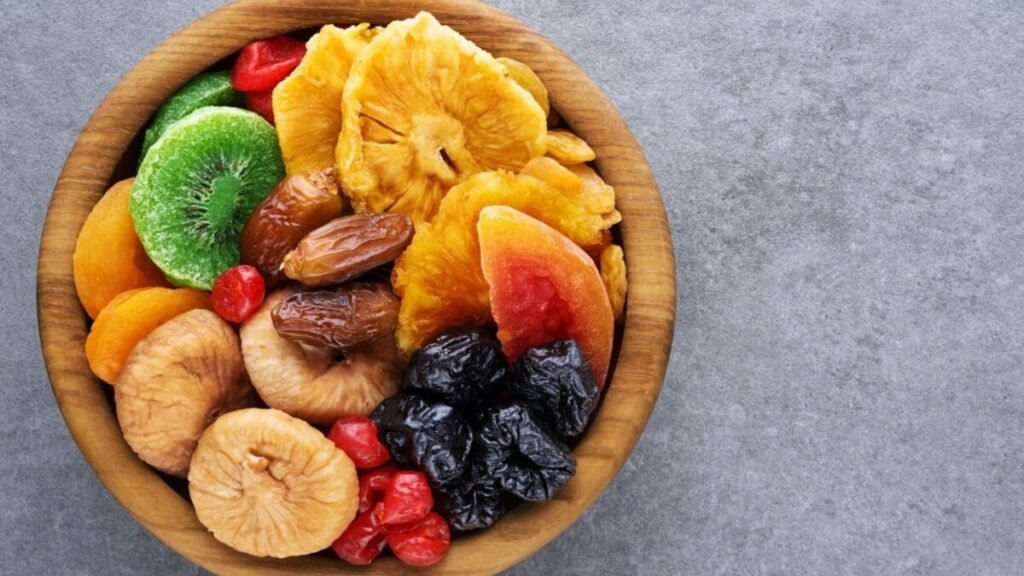
Hack: Freeze-dry fruits and vegetables when they’re in season and store them for emergencies. They’re lightweight, nutritious, and can be rehydrated easily. Plus, they can double as teethers for teething babies.
During emergencies, it’s essential to have high-energy and nutritious snacks on hand to provide essential nutrients and sustain energy levels.
These snacks should be non-perishable and require minimal preparation.
Here are some options to consider:
Non-perishable Snack Options:
If refrigeration is unavailable, non-perishable snacks are a reliable choice.
These snacks have a longer shelf life and can be easily stored in emergency kits.
Some non-perishable snack options include:
- Dried fruits: Dried fruits like raisins, apricots, and cranberries are packed with vitamins, minerals, and fiber. They provide a quick source of energy and are easy to carry.
- Nuts and seeds: Almonds, walnuts, pumpkin seeds, and sunflower seeds are excellent sources of healthy fats, protein, and fiber. They can provide sustained energy and keep you feeling full.
- Granola bars: Look for granola bars with whole grains, nuts, and dried fruits. These bars are convenient, portable, and provide a good balance of carbohydrates, protein, and fiber.
High-energy Snacks:
In emergency situations, high-energy snacks are crucial for maintaining energy levels.
These snacks are calorie-dense and provide a quick source of fuel. Some high-energy snack options include:
- Energy bars: Energy bars specifically designed for physical activity or emergency situations are packed with nutrients and provide a high calorie count. Look for bars that contain a combination of carbohydrates, proteins, and healthy fats.
- Trail mix: Trail mix is a versatile and nutrient-dense snack that combines nuts, dried fruits, and sometimes chocolate or seeds. It provides a mix of carbohydrates, healthy fats, and protein.
- Jerky: Beef or turkey jerky is a high-protein snack that can help keep you feeling full and satisfied. Look for jerky options with minimal additives and preservatives.
Remember to check the expiration dates of your snacks regularly and rotate them as needed to ensure their freshness and quality.
Having a variety of nutritious and high-energy snacks in your emergency supply can help you stay nourished and energized during challenging times.
Hydration and Beverage Options for Emergencies
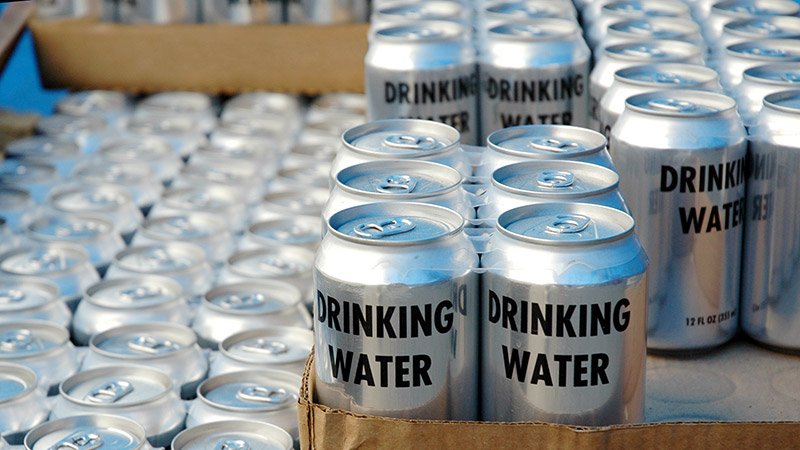
Hack: Fill up ice cube trays with sports drink or coconut water and freeze them. Pop a cube into your water for a quick electrolyte boost. It’s like making cocktails, but the morning-after feels great.
During emergencies, ensuring an adequate water supply and having alternative beverage options is crucial for staying hydrated.
I will discuss the importance of water, along with alternative beverages that can be included in your emergency supplies.
The Importance of Water
Water is essential for survival, and having a three-day supply of water per person is recommended during emergencies.
Each person should have at least one gallon of water per day for drinking and food preparation purposes.
It’s important to store water in clean, sealed containers and check expiration dates regularly to maintain freshness.
Alternative Beverage Options
In addition to water, there are alternative beverage options that can provide hydration and variety during emergencies.
Sports drinks can be useful for replenishing electrolytes and fluids when water is scarce. Coconut water, available in canned form, is a natural source of hydration and can be a good option to include in your emergency supplies.
Non-refrigerated almond milk is another alternative, providing a dairy substitute that can be used for drinking or in recipes.
| Beverage | Benefits |
|---|---|
| Sports drinks | Replenish electrolytes |
| Coconut water | Natural hydration source |
| Non-refrigerated almond milk | Dairy substitute |
Including these alternative beverages in your emergency supplies can provide additional hydration options and help maintain a sense of normalcy during challenging times.
Conclusion
In conclusion, proper planning and preparation are vital when it comes to infant feeding during emergencies.
Whether through breastfeeding or formula feeding, it is crucial to ensure that infants receive the nutrition they need.
By stocking up on essential supplies and creating both short-term and long-term emergency food supplies, parents can be prepared for any situation.
It is also important to consider the inclusion of fresh produce and nutritious snacks in the emergency food supply.
These options provide variety and essential nutrients for the well-being of infants.
Additionally, adequate hydration is crucial, and having a sufficient water supply, as well as alternative beverage options, is necessary.
By following this emergency food guide and prioritizing preparedness for infant feeding, parents can provide the best care for their little ones during challenging times.
FAQ
What is the best option for feeding infants during emergencies?
Breastfeeding is the best option as it provides protection against diseases and ensures infants receive the necessary nutrients.
What should mothers do to ensure safe breastfeeding during emergencies?
Mothers should wash their hands before feeding their infants and learn how to express breast milk by hand in case of power outages.
What should parents do if breastfeeding is not possible during emergencies?
Formula feeding is an alternative. They should wash their hands before preparing formula and use boiled or treated water if ready-to-use infant formula is not available.
What supplies are essential for feeding infants during emergencies?
Essential supplies include clean bottles, nipples, pacifiers, and feeding utensils. If safe water is inaccessible for cleaning, children can sip milk from a disposable cup.
What type of food should be included in an emergency food supply for infants?
Non-perishable foods like canned meats, fruits, and vegetables, high-energy foods like peanut butter, crackers, and granola bars, and foods for infants, elderly individuals, and those with special dietary needs should be included.
How much food should be stocked up for emergencies?
A three-day emergency supply is recommended for most disasters, but in areas with extended power outages, a two-week supply may be necessary.
Can fresh produce be included in the emergency food supply?
Fresh produce can be added for a short period. Apples, citrus fruits, unripe avocados, unripe tomatoes, and root vegetables like potatoes and carrots have longer shelf lives.
What are some nutritious snack options for emergencies?
High-energy snacks like nuts, dried fruits, granola bars, and freeze-dried fruits provide essential nutrients and calories during emergencies.
How much water should be included in the emergency supplies?
A three-day supply of one gallon of water per person per day is recommended for hydration and food preparation. Sports drinks and non-refrigerated almond milk can also be good beverage options.
Why is planning and preparing for emergencies important?
Planning and preparing ensure infants receive proper nutrition during emergencies. Breastfeeding is the best option, but formula feeding can be done safely. Stocking up on non-perishable foods and having a short-term and long-term emergency supply is crucial. Including fresh produce and nutritious snacks can provide variety and essential nutrients. Hydration is equally important, and having a sufficient water supply and alternative beverage options is necessary.

